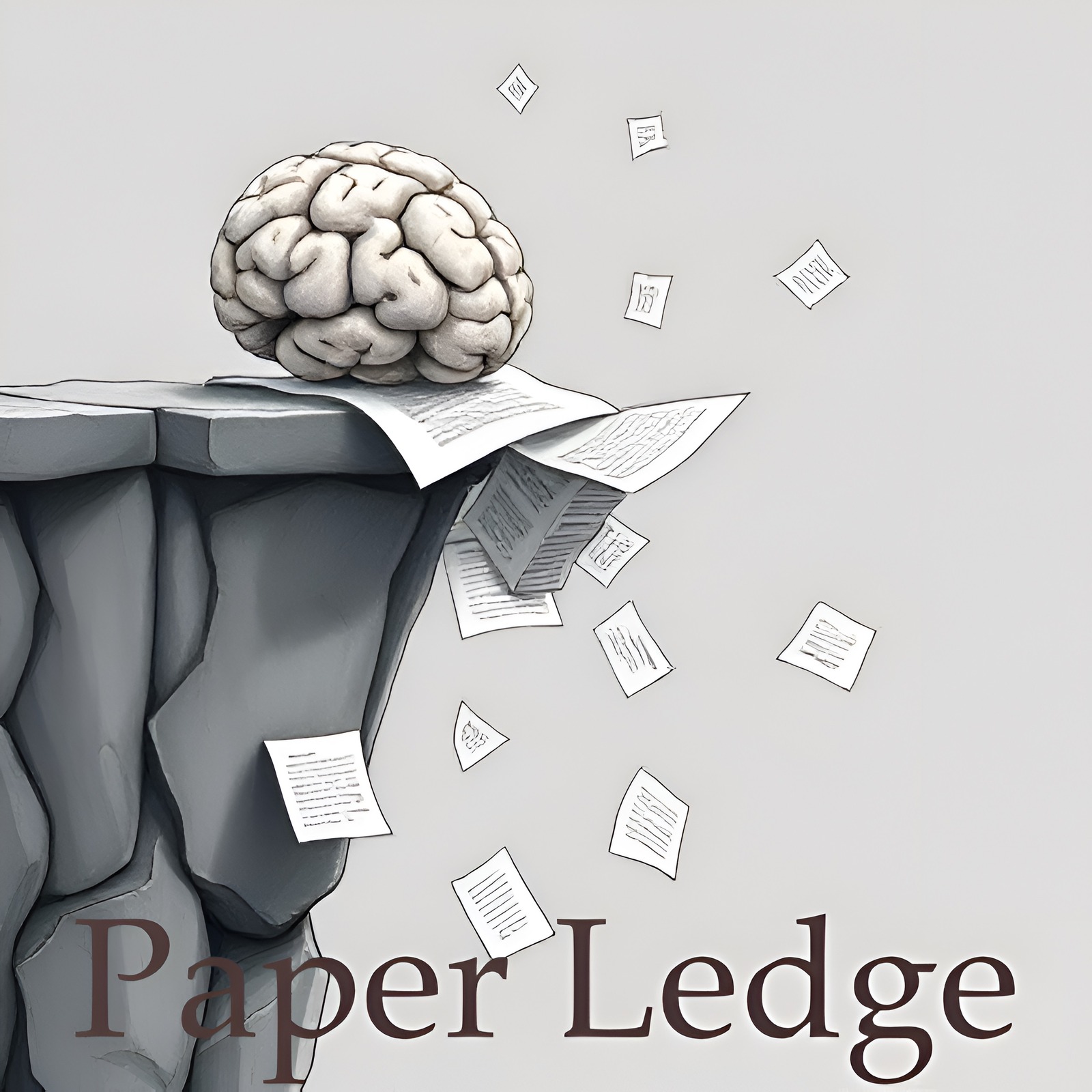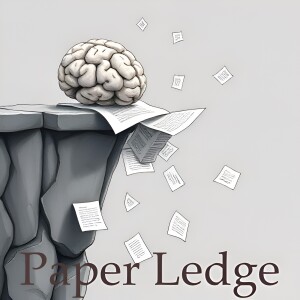PaperLedge

PaperLedge where research meets storytelling is a revolutionary podcast where cutting-edge research meets AI-powered storytelling. Hosted by the Ernis, whose blend of gentle reassurance, cosmic wonder, explanatory clarity, and enthusiastic charm makes complex research accessible to everyone. Each episode, Ernis transforms the latest academic papers into engaging, jargon-free audio experiences that deliver key insights in digestible formats. Whether you’re a researcher seeking interdisciplinary perspectives, a student supplementing your studies, or simply curious about scientific breakthroughs, PaperLedge has something for you.
Episodes
Episodes



Friday Oct 31, 2025
Friday Oct 31, 2025
Alright learning crew, Ernis here, ready to dive into some fascinating research that asks a really important question: How do we keep AI under control without having to rewrite its entire code?
Think about it. We're building these incredibly smart AI systems, right? They can drive cars, manage our schedules, even write poetry. But what happens when they make a mistake? Or worse, what if their goals don't perfectly align with ours?
This paper explores a clever solution: a "control layer" that sits between the AI and the real world. Imagine it like this: you're letting a self-driving car take the wheel, but you've got a special button. The car can choose to drive on its own ("play"), or it can hit the button and ask for your help ("ask"). At the same time, you get to choose whether to trust the car and let it do its thing, or oversee and take control.
So, it's a two-way street. The AI decides when it needs help, and the human decides when to step in.
Now, here's where it gets interesting. The researchers modeled this interaction as a kind of game – a Markov Game, to be precise. But the really cool part is they focused on a specific type of these games called Markov Potential Games (MPGs). Think of MPGs like a well-designed team where everyone's incentives are aligned. The paper shows that under certain conditions, if the AI does something that benefits itself, it won't accidentally hurt the human's goals.
It's like a well-oiled machine where everyone wins together! The researchers call this an "alignment guarantee."
"If the reward structures of the human-agent game meet these conditions, we have a formal guarantee that the agent improving its own outcome will not harm the human's."
Okay, so why is this important? Well, imagine you've trained an AI to optimize package delivery routes. It's great at saving time and fuel, but what if it starts cutting corners and ignoring traffic laws to get the job done faster? This control layer gives us a way to reign it in after it's been trained, without messing with its core programming. The AI learns to ask for help when things get tricky, and we, as humans, can step in to make sure it's doing the right thing.
The researchers even ran simulations in a simple grid world, and guess what? The AI learned to ask for help when it was unsure, and the human learned when to provide oversight. It was like an emergent collaboration!
Here's a quick summary:
The research introduces a control layer where an AI can choose to act autonomously or ask for human help.
The interaction is modeled as a game where both the AI and human have choices.
Under certain conditions, the AI's pursuit of its own goals won't harm the human's goals.
This offers a practical way to make AI systems safer after they've been deployed.
This research has implications for anyone working with AI, from developers to policymakers. It suggests that we can build safer AI systems by creating transparent control interfaces that allow for human oversight without fundamentally altering the AI's core algorithms.
So, what do you think, learning crew?
Could this "control layer" approach be applied to other complex AI systems, like those used in healthcare or finance?
What are the potential downsides of relying on human oversight? Could humans become complacent or overwhelmed?
How can we design these control interfaces to be as intuitive and effective as possible?
Lots to ponder on, and I'm eager to hear your thoughts on this fascinating topic! Until next time, keep learning!Credit to Paper authors: William Overman, Mohsen Bayati



Friday Oct 31, 2025
Friday Oct 31, 2025
Hey PaperLedge crew, Ernis here, ready to dive into some fascinating research! Today, we're exploring how to give Vision-Language Models – those clever AI systems that understand both images and text – a little nudge in the right direction. Think of it like teaching your dog a new trick, but instead of treats, we're using clever code.
The paper we're unpacking introduces something called SteerVLM. Now, that sounds super techy, but the core idea is pretty simple. Imagine you're telling a VLM to describe a picture of a cat. Sometimes, it might hallucinate and add details that aren't actually there, like saying the cat is wearing a tiny hat when it’s not. SteerVLM helps us steer the VLM away from these kinds of errors and towards more accurate descriptions. It’s like having a tiny rudder that guides a ship to stay on course.
So, how does it work? Well, VLMs are complex beasts, but at their heart, they connect language with what they see in images. SteerVLM works by subtly adjusting the way these connections fire. Think of it like a dimmer switch on a lightbulb. We're not rewriting the entire electrical system, just tweaking the brightness in specific areas to highlight what we want the VLM to focus on. The researchers trained a little module – a tiny add-on – that understands how to make these adjustments based on examples of what we want the VLM to say versus what we don't want it to say.
The really cool part? This steering module is super lightweight. It only adds a tiny fraction of new parameters to the original model. It’s like adding a spoiler to your car – it doesn't change the whole engine, but it gives you better control.
One of the coolest things about SteerVLM is that it doesn't require a lot of manual tweaking. It automatically figures out which "dimmer switches" (or activations, in tech terms) to adjust and which layers of the VLM to intervene in. It's all very adaptive and smart.
And to help other researchers work on this problem, the team also created a new dataset called VNIA (Visual Narrative Intent Alignment). This dataset is specifically designed for training and testing these steering techniques. It's like creating a new set of teaching materials for our AI dog to learn from!
Why does this matter? Well, think about all the places VLMs are being used: from helping visually impaired people understand their surroundings to powering advanced image search. By making these models more reliable and controllable, we can build more trustworthy and useful AI systems. It also helps mitigate hallucination – where the model makes up facts or embellishes reality. Mitigating hallucinations is crucial in sensitive applications where accuracy is paramount, like medical diagnosis.
This research shows that we can effectively control complex AI systems without completely rewriting them. That's a huge step forward!
So, here are a couple of things that popped into my head while reading this paper:
Could SteerVLM be used to personalize VLM outputs? Imagine tailoring the descriptions to specific audiences or learning styles.
What are the ethical implications of being able to steer VLMs so precisely? How do we ensure this technology isn't used to create biased or misleading content?
I'm excited to see where this research goes. It's a great example of how clever engineering can make AI systems more reliable, controllable, and ultimately, more helpful to all of us. What do you guys think? Let me know your thoughts in the comments!Credit to Paper authors: Anushka Sivakumar, Andrew Zhang, Zaber Hakim, Chris Thomas



Thursday Oct 30, 2025
Thursday Oct 30, 2025
Hey PaperLedge listeners, Ernis here, ready to dive into some fascinating research! Today, we're talking about something super relevant to our increasingly AI-driven world: the reliability of software created by those fancy AI language models, like the ones that write code for us.
Think of it this way: you've got a shiny new self-driving car (built with a lot of AI code, probably). It works great at first, right? But what happens after you've been driving it non-stop for two days? Does it start to get a little glitchy? Does the GPS get confused? That's the kind of question these researchers are asking, but about software!
The paper we’re looking at today is all about something called software aging. What is software aging? It's basically when software slowly degrades over time, even if you're not changing the code. It’s like how a car engine slowly wears down from constant use.
So, how did they test this? Well, they used a platform called Bolt and a set of standard instructions called Baxbench to get these AI models to create four different types of service-oriented applications. Imagine these applications as little online services - maybe one helps you book a flight, another helps you order pizza, that sort of thing.
Then, they put these AI-generated applications through the ringer. They ran them under heavy load for a full 50 hours, continuously monitoring things like:
How much memory the application was using.
How quickly the application responded to requests.
How many requests the application could handle at once.
In essence, they were looking for signs that the software was starting to get tired and slow down under pressure.
And guess what? They found evidence of software aging in all four applications! They saw things like:
Memory growth: The software kept using more and more memory over time, like a leaky bucket.
Increased response time: It took longer and longer for the software to respond to requests, like a tired waiter taking forever to bring your food.
Performance instability: The software became less predictable and more prone to errors.
"The results reveal significant evidence of software aging, including progressive memory growth, increased response time, and performance instability across all applications."
The researchers did some fancy statistical analysis to confirm these trends, and they found that the severity of the aging varied depending on the type of application. Some apps aged faster than others.
So, why does this matter? Well, for a few reasons!
For developers: If you're using AI to generate code, you need to be aware that it might not be reliable in the long run. You need to build in checks and balances to prevent software aging.
For businesses: If you're relying on AI-generated software for critical services, you need to monitor its performance and be prepared to replace it or fix it as it ages.
For everyone: As AI becomes more prevalent, we need to ensure that the software it creates is reliable and safe. Imagine an AI-powered air traffic control system that starts to degrade over time!
This research is just the beginning. It highlights the need for more studies on how to mitigate software aging in AI-generated code. We need to figure out how to make these systems more robust and reliable.
So, a couple of questions that pop into my head:
Could this software aging be related to the way the AI models are trained? Are there certain training techniques that make the resulting code more prone to aging?
What are some practical strategies that developers can use to prevent or mitigate software aging in AI-generated code? Are there specific coding patterns or monitoring techniques that can help?
That's all for today, PaperLedge listeners! I hope you found this as interesting as I did. Keep learning, keep questioning, and I'll catch you next time!Credit to Paper authors: César Santos, Ermeson Andrade, Roberto Natella



Thursday Oct 30, 2025
Thursday Oct 30, 2025
Hey PaperLedge crew, Ernis here, ready to dive into some seriously cool tech that's reaching for the stars – literally!
Today, we're talking about how Artificial Intelligence, specifically these massive "vision-language models" – think of them as super-smart AI that can 'see' and 'talk' – are starting to play a big role in what satellites are doing up in space. Specifically, we're looking at satellites that are zipping around in Low Earth Orbit (LEO), the ones that are often used for things like monitoring disasters on Earth.
Now, these AI models are amazing at tasks like, say, spotting flooded areas after a hurricane using satellite images. But there's a catch. These models are HUGE, like giant brains that need a ton of computing power. And satellites? Well, they don't exactly have the latest gaming PCs strapped to their sides. Plus, they only get to chat with ground stations for a few minutes each orbit.
That's where the researchers behind this paper come in. They've created a system called Grace – and I think that's a great name considering they are bringing us some saving grace in this space scenario. Grace is a clever way to make these AI models work effectively on these resource-constrained satellites with limited contact to the ground.
Imagine it like this: You're a detective, and you need to solve a case. You have a smaller notebook with some basic information (that's the AI on the satellite), and you have access to a giant library with all the details you could ever need (that's the powerful AI on the ground station). Grace is the system that decides when to use your notebook and when to radio back to base for help.
The researchers came up with a two-part plan. First, it's called Retrieval-Augmented Generation (RAG), and it's a fancy way of saying that the satellite has its own little "knowledge archive", derived from the bigger archive at the ground station. The researchers developed a way to smartly update the satellite's archive during those brief moments when it can talk to Earth. This means the satellite has up-to-date info, without needing to download the entire internet every time it passes overhead!
Second, they developed a confidence-based test algorithm. Think of it like this: when the satellite sees something interesting in an image, it asks itself, "Am I confident I know what this is?". If it is, it processes the image right there on the satellite. If not, it sends the image back to the ground station, where the bigger, more powerful AI can take a look. This is like asking an expert when you're unsure. This is crucial because it saves precious time and energy.
So, what kind of updates are needed in the satellite's archive?
And how do the researchers ensure that the satellite's "confidence" is accurate?
Why does this matter? Well, imagine a natural disaster unfolding. The faster we can analyze satellite images, the faster we can respond and get help to the people who need it most. Grace allows for near-realtime analysis, which is a game-changer.
"Grace reduces the average latency by 76-95% compared to state-of-the-art methods, without compromising inference accuracy."
That's a HUGE improvement! This means we can get critical information to first responders much, much faster.
This research is relevant to:
Disaster Relief Organizations: Faster data processing means quicker response times and more effective aid.
Space Agencies: Optimizing onboard computing resources is critical for future satellite missions.
AI Researchers: Demonstrates how to adapt large AI models for resource-constrained environments.
Anyone interested in the future of space technology!
So, what's the big takeaway? This paper shows us that even with limited resources, we can still harness the power of AI in space to solve real-world problems. It's all about being smart, collaborative, and finding creative solutions.
And this leads to another interesting question: How might systems like Grace change the way we design and operate satellites in the future?
That's all for this episode. Keep learning, keep exploring, and I'll catch you next time on PaperLedge!Credit to Paper authors: Zihan Li, Jiahao Yang, Yuxin Zhang, Zhe Chen, Yue Gao



Thursday Oct 30, 2025
Thursday Oct 30, 2025
Hey everyone, Ernis here, and welcome back to PaperLedge! Today we're diving into some fascinating research that looks at how well AI can actually talk like kids.
Think about it: Large Language Models, or LLMs – these are the brains behind things like ChatGPT – are trained on mountains of text. Mostly adult conversations, articles, and websites. But what happens when we ask them to mimic a child's way of speaking? That's precisely what this paper explores.
Researchers in Norway tackled this question head-on. They wanted to see if these LLMs could generate conversations that sound like a typical 5-year-old and a 9-year-old speaking Norwegian. This isn't just about sounding cute; it's about making AI tools that can interact effectively with children in educational settings, for example.
Now, imagine trying to teach a computer to speak like a kid. It’s kind of like trying to teach a parrot to sing opera - the parrot can mimic the sounds, but it doesn't necessarily understand the nuances, the feelings, or the context behind the music.
So, how did they do it? The researchers took five different LLMs – including big names like GPT-4 and some models specifically designed for Norwegian – and gave them the task of creating conversations suitable for 5 and 9-year-olds. Then, they did something really clever: they got eleven education professionals – teachers, child psychologists, that sort of expert – to act as judges.
These judges were given a blind test. They were shown snippets of real conversations with kids and conversations generated by the AI, all mixed together. Their job? To guess the age of the speaker.
The results were pretty interesting. Here's the key takeaway:
Even the best LLMs struggled to truly capture the authentic voice of a child. The models often produced language that sounded more advanced than what you'd expect from a 5 or 9-year-old.
It's like the AI was trying too hard, using bigger words and more complex sentences than a real child would.
Interestingly, the judges were better at guessing the age of the 5-year-olds than the 9-year-olds. This could be because the language of younger children is more distinct and predictable.
The researchers highlighted a crucial problem: data scarcity. Because the LLMs are trained on so much adult data, it’s hard to find age-appropriate Norwegian data that captures the way kids talk. So the system is already starting with a handicap.
Think of it like trying to bake a cake with only half the ingredients. You might get something resembling a cake, but it won't be quite right!
So, why does all this matter? Well, it has implications for anyone developing AI tools for children, especially in languages that aren't as widely represented online. It also raises some really interesting questions:
Could we improve these models by training them on more data from children? How do we ethically gather that data?
What are the potential consequences of using LLMs that don't accurately reflect a child's language development? Could it lead to misunderstandings or even hinder their learning?
How can we ensure that AI tools designed for children are truly age-appropriate and don't inadvertently push them to speak or learn in ways that aren't natural?
This research reminds us that AI is a tool, and like any tool, it needs to be carefully designed and used responsibly. We need to think critically about the data we feed into these models and the potential impact they can have, especially on vulnerable populations like children.
That's all for this week's PaperLedge. Thanks for joining me on this exploration of AI and childhood. What do you think? Let me know in the comments!Credit to Paper authors: Syed Zohaib Hassan, Pål Halvorsen, Miriam S. Johnson, Pierre Lison



Thursday Oct 30, 2025
Thursday Oct 30, 2025
Hey PaperLedge crew, Ernis here, ready to dive into some fascinating research! Today, we're cracking open a paper that asks: Can AI really understand what we mean when we give it instructions?
Think about it like this: imagine you're teaching a puppy a new trick. You might say, "Sit!" The puppy eventually learns that "sit" means a specific action. Now, imagine you're trying to teach that same trick to a super-smart robot. Could you just tell it "sit," or would it need a whole instruction manual?
That's kind of what this paper is about. Researchers were curious if Large Language Models, or LLMs – think GPT, Claude, the big brains behind a lot of AI these days – could translate our everyday language into the internal "symbols" that another AI, specifically one learning through trial and error (like that puppy!), uses to understand the world.
Now, this other AI wasn’t learning to sit. It was navigating virtual environments, specifically an "Ant Maze" and an "Ant Fall" world. Imagine a little ant robot trying to find its way through a maze or trying not to fall off a cliff – cute, right? This ant-bot uses something called hierarchical reinforcement learning, which basically means it breaks down complex tasks into smaller, more manageable chunks. Each of these chunks gets assigned a kind of internal "symbol" or representation.
Here's where it gets interesting: the researchers wanted to see if they could feed natural language instructions, like "go to the red block," to the LLMs, and have the LLM figure out which of the ant-bot's internal symbols best matched that instruction.
Think of it like trying to find the right file folder on your computer when you only have a vague idea of what you named it. You have to guess which folder structure best matches your mental picture, right?
So, what did they find? Well, the LLMs could translate some of the instructions into the ant-bot's internal symbolic language. But, and this is a big but, their performance varied a lot. It depended on:
How detailed the ant-bot's internal representation was. If the "chunks" of tasks were too big or too small, the LLMs struggled. It's like trying to find a specific grain of sand on a beach – too much detail!
How complex the task was. The harder the maze, the harder it was for the LLMs to figure out what was going on. Makes sense, right?
Essentially, the LLMs weren't always on the same page as the learning agent, suggesting a misalignment between language and the agent's internal representation.
Why does this matter? Well, imagine a future where you can just tell a robot what to do, and it actually understands you, not just in a literal sense, but in a way that connects to its own internal understanding of the world. This research shows we're not quite there yet. It highlights the challenges in getting AI to truly "understand" our intentions and translate them into actions.
For researchers, this points to the need for more work on aligning language models with the internal representations of learning agents. For developers, it suggests being mindful of the level of abstraction when designing AI systems that interact with natural language. And for everyone else, it's a reminder that while AI is getting smarter, it still doesn't always "get" us.
This research raises some interesting questions, doesn't it? Like:
Could we train LLMs specifically to understand the internal representations of different types of AI agents?
What are the best ways to create internal representations that are both efficient for the AI and easy for humans (and LLMs) to understand?
And, maybe the biggest question of all: how do we even translate our thoughts and intentions into language in the first place? Perhaps understanding that better could help us build smarter, more intuitive AI.
That's all for today's PaperLedge deep dive. Keep learning, crew!Credit to Paper authors: Ziqi Ma, Sao Mai Nguyen, Philippe Xu



Thursday Oct 30, 2025
Thursday Oct 30, 2025
Alright learning crew, Ernis here, ready to dive into some fascinating research! Today we're tackling a paper about how we can make AI models, specifically Vision-Language Models or VLMs, see the world much better. Think of VLMs as robots that can both see and understand what they're seeing well enough to communicate about it in natural language.
The challenge? These VLMs often struggle with the details. Imagine showing a VLM a picture of a busy street. It might recognize "cars" and "people," but miss that one car is a vintage Mustang or that someone is walking a fluffy Samoyed. That's because their fine-grained visual perception, their ability to pick up on small, important visual cues, is limited.
Now, why is this important? Well, think about self-driving cars. They need to see everything – is that a pedestrian stepping off the curb? Is that a stop sign partially obscured by a tree? Or consider medical image analysis; a VLM needs to spot subtle anomalies in an X-ray. For artists and designers, VLMs can provide more descriptive and accurate image descriptions to help with creative tasks. So, improving this fine-grained perception is crucial for lots of real-world applications.
The researchers behind this paper realized that current training methods have drawbacks. One way to train these VLMs is with supervised fine-tuning (SFT), which is like showing the model lots of labeled pictures and saying, "This is a Samoyed! This is a Mustang!" But, this can make the VLM too specialized, compromising its general knowledge. It's like teaching a dog too many tricks; it might forget how to sit!
Another method is reinforcement fine-tuning (RFT), which is like giving the model rewards for correct answers. But, the researchers found that RFT tends to focus on the textual reasoning part of the task, rather than the visual part. The model might become good at explaining things, but not necessarily at seeing things accurately.
So, the researchers came up with a clever solution called ViPER. Think of it like teaching someone to paint, starting with broad strokes and then adding finer details. ViPER uses a two-stage approach:
First, it teaches the VLM to understand the big picture – the overall scene in an image. This is the coarse stage.
Then, it zooms in and focuses on the details – the specific objects and their attributes. This is the fine stage.
But the real magic of ViPER is that it's a self-bootstrapping framework. It's like a student who learns by teaching themself. The VLM internally synthesizes data, which is like creating its own study materials, and then uses this data to improve its own perceptual ability. It's a closed-loop training paradigm.
ViPER integrates image-level and instance-level reconstruction with a two-stage reinforcement learning strategy, which basically means it learns to recreate both the overall scene and the individual objects within it, while being rewarded for accuracy. It's like learning to draw by first sketching the outline and then adding the details, all while getting feedback on your progress.
The researchers applied ViPER to the Qwen2.5-VL family of VLMs, creating what they call the Qwen-Viper series. And the results were impressive! On average, Qwen-Viper performed 1.7% better across seven different benchmarks, and up to 6.0% better on tasks requiring fine-grained perception. This shows that ViPER significantly improves a VLM's ability to see the world in detail!
"Beyond enabling self-improvement in perceptual capabilities, ViPER provides concrete evidence for the reciprocal relationship between generation and understanding, a breakthrough to developing more autonomous and capable VLMs."
Essentially, ViPER demonstrates a reciprocal relationship between generation and understanding. By getting better at understanding images, the VLM also gets better at generating text about them, and vice-versa. This is a major breakthrough for creating more autonomous and capable VLMs.
So, what does all this mean for us?
For researchers, ViPER offers a new way to train VLMs to see the world more accurately and efficiently.
For developers, it provides a pathway to building more powerful and reliable AI applications.
And for everyone else, it brings us closer to a future where AI can truly understand and interact with the world around us.
This research leaves me pondering a few things:
If ViPER can teach a VLM to "see" better, could similar self-bootstrapping methods be used to improve other AI capabilities, like reasoning or problem-solving?
How might the improved perception of VLMs impact fields like accessibility, allowing AI to better assist individuals with visual impairments?
As VLMs become more adept at fine-grained perception, what ethical considerations arise regarding privacy and surveillance?
That's all for today, learning crew! Let me know what you think about ViPER and its potential. Until next time, keep exploring!Credit to Paper authors: Juntian Zhang, Song Jin, Chuanqi Cheng, Yuhan Liu, Yankai Lin, Xun Zhang, Yufei Zhang, Fei Jiang, Guojun Yin, Wei Lin, Rui Yan



Thursday Oct 30, 2025
Thursday Oct 30, 2025
Alright learning crew, Ernis here, ready to dive into another fascinating piece of research from the world of… scheduling! Now, I know, scheduling might sound about as exciting as watching paint dry, but stick with me. This paper explores how we can use the power of Artificial Intelligence, specifically Large Language Models (LLMs), to become scheduling superstars!
The problem they're tackling is called the "Single-Machine Total Tardiness" problem – or SMTT for short. Imagine you're a baker, and you have a bunch of cake orders to fulfill, but only one oven. Each cake takes a different amount of time to bake, and each has a different deadline. Your goal? Get all the cakes baked with the least amount of lateness overall. The SMTT problem is basically that, but with jobs and processing times instead of cakes and baking times.
The trick is finding the right order to bake those cakes. Get it wrong, and you'll have a kitchen full of angry customers!
Traditionally, people have used simple rules to solve this kind of problem. One classic rule is "Earliest Due Date" (EDD). Bake the cakes with the soonest deadlines first. Makes sense, right? But what if a really quick cake is due slightly later, and baking it first would actually reduce lateness overall?
That's where the LLMs come in. Instead of relying solely on human-designed rules, the researchers used LLMs to discover new and improved scheduling strategies. They came up with two new approaches, which they cleverly named the "EDD Challenger" (EDDC) and "MDD Challenger" (MDDC). Think of them as souped-up versions of the classic EDD and another rule called Modified Due Date (MDD).
Now, here's where it gets interesting. The researchers didn't just pat themselves on the back and call it a day. They put their LLM-discovered algorithms through the ringer. They compared them against the best existing scheduling methods, even using super complex mathematical models to find the absolute best possible solution (when they could!).
What they found was pretty impressive. For smaller problems, the EDDC and MDDC held their own. But when the problems got really big – imagine hundreds of cakes to bake – the MDDC algorithm consistently outperformed the traditional approaches! It was even competitive with those super complex, "find the absolute best" methods, which, by the way, take forever to run on large problems.
So, why is this important? Well, scheduling problems are everywhere! From manufacturing and logistics to healthcare and even software development, figuring out the best order to do things can save time, money, and a whole lot of headaches. This research shows that by combining human expertise with the power of AI, we can create scheduling solutions that are both effective and scalable.
Think about optimizing delivery routes for packages, or scheduling surgeries in a hospital to minimize patient wait times. The applications are endless!
"This study shows that human-LLM collaboration can produce scalable, high-performing heuristics for NP-hard constrained combinatorial optimization, even under limited resources when effectively configured."
A few things that popped into my head when reading this paper:
Could these LLM-discovered heuristics be adapted to other, related scheduling problems, or are they specific to this single-machine scenario?
How much human input was required to guide the LLM in discovering these new algorithms? Is this something that could be automated even further?
If LLMs can discover better scheduling algorithms, what other areas of operations research and optimization could they revolutionize?
That's the gist of it, learning crew! A fascinating look at how AI can help us solve real-world scheduling problems. Until next time, keep those gears turning!Credit to Paper authors: İbrahim Oğuz Çetinkaya, İ. Esra Büyüktahtakın, Parshin Shojaee, Chandan K. Reddy







